The ZXR Story
1988: Kawasaki built a racer called ZXR-7. This bike had an aluminium perimeter frame and a tuned GPX750 engine. From this bike the first of the ZXRs would be born.
The ZXR-7 continued its evolution through to 1994 when endurance
regulations changed. Up until then the ZXR-7, though sharing the looks
of the ZXR range, was very much a prototype machine.
| Here’s some pictures of the 1991 ZXR-7 Click on the thumbnails for a bigger picture |
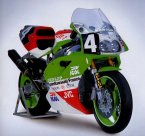 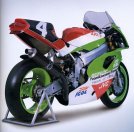 |
IMPORTANT NOTE:
Kawasaki in its wisdom decided to confuse us all by
calling its range of 750 sportsbikes “ZX7 Ninja” in the US and “ZXR750”
just about everywhere else. The Race homologation versions got an extra R
(ZX7R and ZXR750R respectively). In ’96 they then decided to use the
same name worldwide so the standard version became the ZX7R and the Race
homologation version became the ZX7RR!
| ZXR750H1, ZX7 (US) | ZXR750R, ZX7R (US) | ||||||
|---|---|---|---|---|---|---|---|
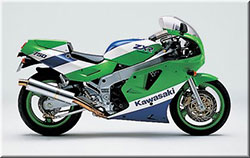 The ZXR line started with the “H” models (called ZX7 in the US). The H1 looked uncannily like the first model of the ZXR-7 racer. The rear suspension was very hard. This was chiefly due to the suspension linkage and, to a lower extent, to the hard rear shock.
|
No “R” version in 1989 |
||||||
 The H2 inherited most of the Racekit engine mods found on the ZXR-7. Although the H2 looks very similar to the H1, both engine and frame underwent a lot of changes. A host of carbs, radiator and engine mods mean that parts are often not interchangeable with the H1. The rear suspension was still pretty hard.
|
No “R” version in 1990 |
||||||
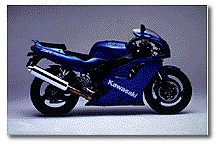 The ZXR was overhauled and the “J” models were born. The Js were deliberately restricted by Kawasaki to 100bhp (and are hard to derestrict), but had very good midrange. These were the first ZXRs with USD fork and were overall lighter than both the preceeding H models an later Ls and Ps. The engine was now used as a stressed member to increase chassis rigidity. The hard rear shock of the J1 was partially sorted with the J2. \ |
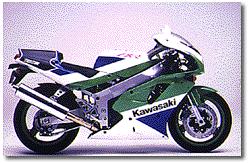 A Race version (superbike omologation special – “K” model) was also built, but in limited numbers. This was called ZXR750R (or ZX7R in the US). The race version had the same frame as the J models, but it sported 39mm Keihin Flatslide carburettors, full power engine, close ratio gearbox, alloy tank, fully adjustable suspension front and rear, single seat and was 5kg lighter than the J models. Both K1 and K2 have the same spec.
|
||||||
 This was the first ZXR to have Ram-air (one intake on the left hand side of the headlights). The engine of the previous years Race version (“K models”) was now fitted to all L models (minus the flatslides and the Close Ratio Gearbox). The rear suspension was now sorted and much more compliant than previous models thanks to a new and more linear linkage and a new shock.
|
 The race version (“M” model) specification was as for the previous K model with the addition of Ram-air and an adjustable swingarm pivot (adjustment is done through the use of Kawasaki Racekit parts). The M model got the J/K model’s super stiff rear suspension linkage instead of the softer (and better) one mounted on the L models. Both M1 and M2 have the same spec.
|
||||||
| 1996 – Kawasaki renames the latest models | |||||||
| ZX7R | ZX7RR | ||||||
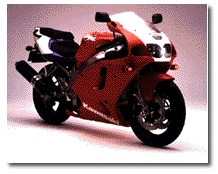 The name ZXR was dropped and both in Europe and the US the standard bike was now called ZX7R. The new bike had a shorter stroke/wider bore engine which gave it much more midrange than previous models, Twin Ram-air intakes, 6 pot Tokiko brakes and suspension was now fully adjustable front and rear.
|
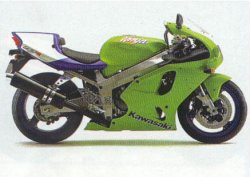 The race version (“N” model) had a similar spec to the previous M models (although the alloy tank was now replaced by a steel one), but it now also boasted an adjustable steering head angle (with additional Kawasaki Racekit parts). The flatslide carbs went from 39mm to 41mm. The suspension was of higher spec and more adjustable than the standard ZX7R and the braking was taken care of by a pair of 6 pot Nissins.
|



